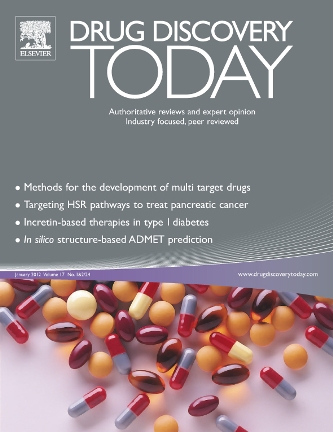Development of LRRK2 inhibitors through computational strategies: a promising avenue for Parkinson’s disease
IF 7.5
2区 医学
Q1 PHARMACOLOGY & PHARMACY
引用次数: 0
Abstract
Parkinson’s disease (PD) is a prevalent neurodegenerative disorder that remains incurable. Leucine-rich repeat kinase 2 (LRRK2) has a pivotal role in PD pathogenesis, making it a promising therapeutic target. Thus, there is an urgent need to develop structurally diverse, highly selective, blood–brain barrier (BBB)-permeable LRRK2 inhibitors. Computer-aided and artificial intelligence (AI)-driven drug design methods have shown significant advantages in the discovery of LRRK2 inhibitors. Building upon a systematic review of structural characteristics, biological functions, and molecular mechanisms of LRRK2, in this review, we summarize recent advances in LRRK2 inhibitor development, highlighting the pivotal role of computational approaches in accelerating inhibitor discovery.
通过计算策略开发LRRK2抑制剂:帕金森病的有希望的途径
帕金森病(PD)是一种普遍的神经退行性疾病,目前仍无法治愈。富亮氨酸重复激酶2 (Leucine-rich repeat kinase 2, LRRK2)在帕金森病的发病机制中起着关键作用,是一个很有前景的治疗靶点。因此,迫切需要开发结构多样化、高选择性、血脑屏障(BBB)可渗透的LRRK2抑制剂。计算机辅助和人工智能(AI)驱动的药物设计方法在发现LRRK2抑制剂方面显示出显着的优势。在对LRRK2的结构特征、生物学功能和分子机制进行系统综述的基础上,我们总结了LRRK2抑制剂开发的最新进展,强调了计算方法在加速抑制剂发现中的关键作用。
本文章由计算机程序翻译,如有差异,请以英文原文为准。
求助全文
约1分钟内获得全文
求助全文
来源期刊

Drug Discovery Today
医学-药学
CiteScore
14.80
自引率
2.70%
发文量
293
审稿时长
6 months
期刊介绍:
Drug Discovery Today delivers informed and highly current reviews for the discovery community. The magazine addresses not only the rapid scientific developments in drug discovery associated technologies but also the management, commercial and regulatory issues that increasingly play a part in how R&D is planned, structured and executed.
Features include comment by international experts, news and analysis of important developments, reviews of key scientific and strategic issues, overviews of recent progress in specific therapeutic areas and conference reports.
 求助内容:
求助内容: 应助结果提醒方式:
应助结果提醒方式:


